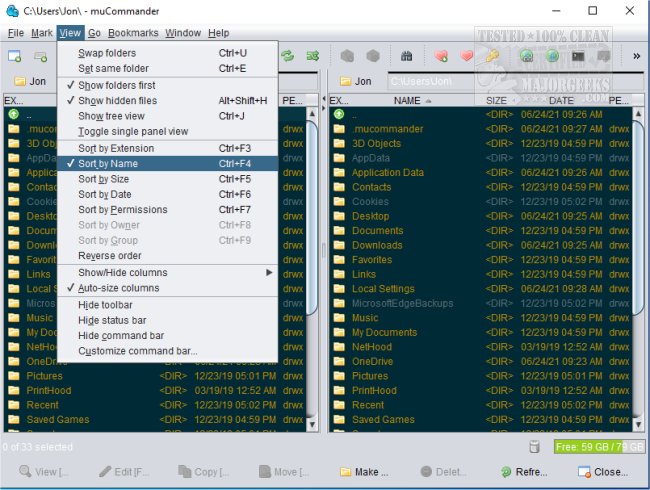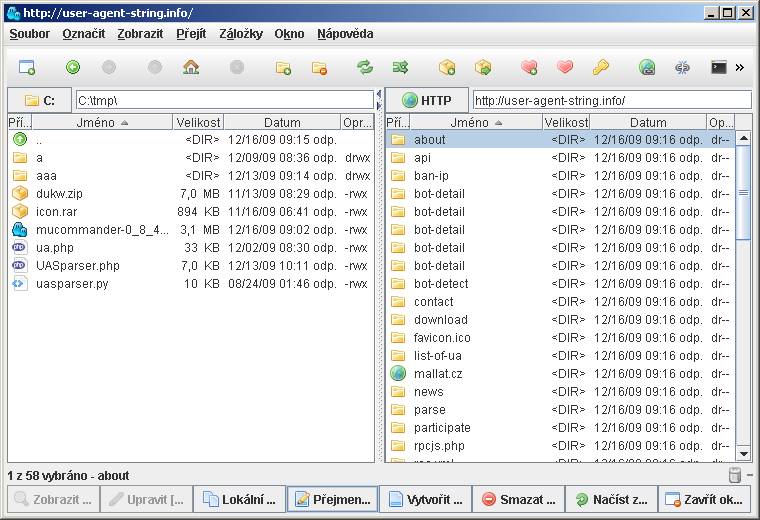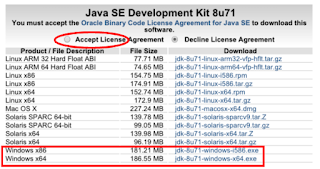

- #MUCOMMANDER JDK 8 FULL#
- #MUCOMMANDER JDK 8 PORTABLE#
- #MUCOMMANDER JDK 8 SOFTWARE#
The name of the currently selected file, without its extension. The extension of the currently selected file (or the empty string if none) The path of the directory from which muCommander was started. The path of the currently selected file's parent.
#MUCOMMANDER JDK 8 FULL#
The full path of the currently selected file. You can use the following keywords: Keyword
/usr/bin/emacs: opens Emacs under Unix systems. open -a Safari: opens the Safari web browser under OS X. Just type in the command as you would in a Shell. That's the system command to execute when your custom command is called. value attribute (compulsory) General syntax These aliases have a special meaning for muCommand and shouldn't be modified unless you know what you're about. While there are no real constraints on a command's alias, you should avoid the following values: When giving a name to a custom command, you should try to make it something meaningful, such as Safari for Apple's Web browser. alias attribute (compulsory)Ī command's alias is the name under which muCommander will know and display it (note that this isn't strictly correct, see display for more details). and edit it according to the rules I'll be outlining bellow. If you want to create a new custom command, just copy one of the lines that start with The command element accepts 4 attributes, alias, value, type and display.įor the others, it doesn't really matter. It can contain any number of command elements. Your custom commands file should look something like:įor people who can read XML, this is fairly simple: 
#MUCOMMANDER JDK 8 SOFTWARE#
Should this be your case, you can modify your commands.xml file to use whatever software you want for file viewing and edition.

Using custom commands (and custom associations?), I was able to override this frustrating behaviour.įinally, some users are fairly unhappy with the internal file viewer and file editor. I'm personally using this as a workaround to an odd OS X bug: however often I tell it that XML files should be opened with Emacs, it insists on triggering Dashcode, which annoys me to no end. Opening it the normal way would start your text editor, while creating a custom Mail command could automatically create a new e-mail with that file as an attachment.Īnother reason to tweak your custom commands is that you might not be happy with system defaults. While muCommander will use the application associated with a file when opening it, this is not always the desired action: say, for example, that you have a text file that you want to e-mail someone. Well, the most common reason to do so is that custom commands will appear in your Open With. If you need help in figuring out where your commands.xml file is located, read this. This page explains the format of the commands.xml customisation file, and how you can use it to configure muCommander to better suit your needs. starting the system's default file manager.Typical actions that involve custom commands are:
#MUCOMMANDER JDK 8 PORTABLE#
Fixed memory leak issue in FileSearch, Viewer and Editorįor me the new icons are too flat and too glary.įor some unknown reason trolcommander.exe is not included in the portable package ( trolcommander-0_9_), it can be extracted from the installer package ( your request hasn't been implemented yet- trolCommander version 0.9.9 cannot pack to 7-Zip.Custom commands are what muCommander uses to interract with your system. Added NewTab command to toolbar and main menu. Improved ADB location detection on MacOS X. Added 'created' and 'last accessed' dates in file properties window. Make dir: try as root on MacOS X if permission denied. Right arrow key - goto directory if selected directory, else goto end of list) The second press - go to the parent directory. New actions in file table: NavigateLeft/NavigateRight (The first press of the left arrow key - go to the top of the table. Added shortcut key to display the file popup menu with default key being the Context Menu key (or Alt+Down in MacOS X). Alt+Enter hotkey in text editor now can open file under cursor. Implemented new file Preview mode (Ctrl+4). High-resolution icons for Retina displays.







 0 kommentar(er)
0 kommentar(er)
